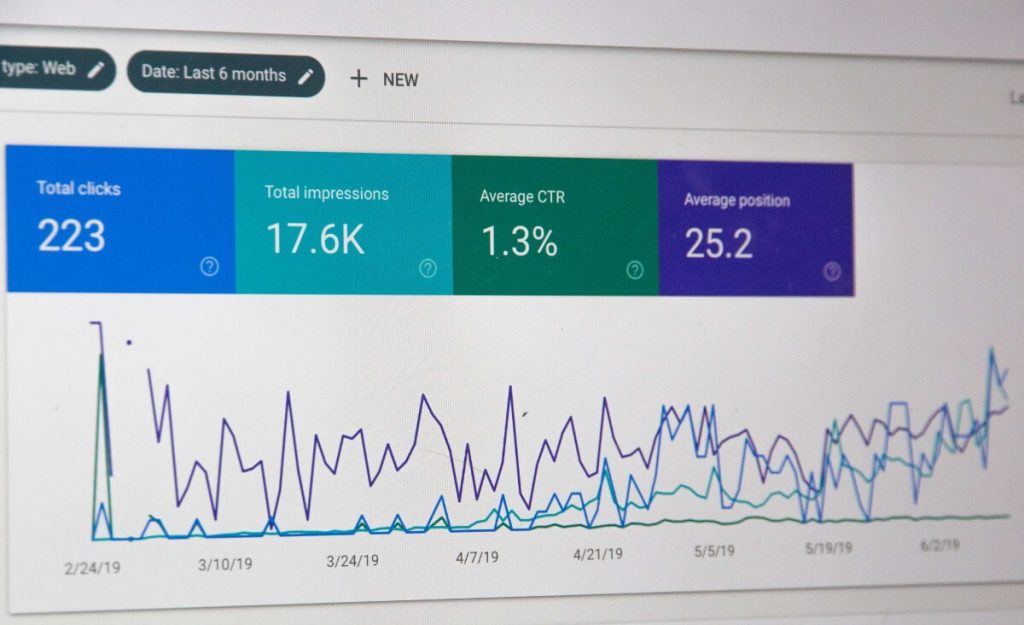
The Importance of User Experience in Website Design
As the digital landscape continues to evolve, the competition for website traffic and search engine rankings is becoming increasingly fierce. One key aspect that sets successful websites apart is a focus on user experience (UX). By understanding the needs and preferences of your target audience, you can create a website that not only looks great, but also provides a seamless and intuitive experience for users.
In addition to increasing engagement and conversion rates, a user-friendly website also promotes brand loyalty and trust. A user-friendly website should take into account elements like site speed, navigation, content quality, and accessibility. A more effective and prosperous online presence may be achieved by investing in UX design and frequently reviewing user feedback to help identify pain areas and chances for development. Prioritizing user experience can make the difference between a poor website and a highly successful one in today’s cutthroat digital environment.
The Importance of Providing a Good User Experience When Designing a Website
The fight for website traffic and search engine rankings is getting more and more intense as the digital landscape is constantly evolving. The user experience (UX) is now one of the most defining characteristics of highly successful websites because there are so many competing for users’ attention. Websites that focus user experience (UX) may draw in and keep people, increasing engagement and conversion rates.
Understanding the needs and preferences of your target audience is crucial for designing a website that offers the best user experience. In order to do this, you must perform research to determine the wants and needs of your target audience and then build your website accordingly. By doing this, you can design a website that is organized and simple to use, increasing engagement and, eventually, improving performance.
Prioritizing the user experience is essential for website success given the fierce competition for website traffic and search engine rankings. Finding out your target audience’s wants and preferences through research will help you create your website effectively. By doing this, you can design a website that is both aesthetically pleasing and simple to use, which will enhance user engagement, boost conversion rates, and improve performance all around.
What exactly is meant by "user experience"?
The phrase “user experience,” or UX, refers to the general perception a person receives while engaging with a website. The general layout and design, simplicity of navigation, relevancy and appropriateness of the material, and others all contribute to a positive user experience. By giving these factors priority, website owners may design a website that is both aesthetically pleasing and simple to use, increasing engagement and conversion rates.
User experience is essential while designing a website. A user is likely to feel dissatisfied and quit a website if they have trouble navigating it or finding the information they need. A website that is well-designed and simple to use, on the other hand, can offer a favorable user experience, increasing engagement and boosting conversion rates. Consequently, it is essential to focus closely on the user experience while designing.
Beyond engagement and conversion rates, a positive user experience has many other advantages. A website’s user experience can influence search engine rankings as well. User experience is one of the many aspects that search engines like Google take into account when ranking websites. Low bounce rates and high engagement rates are indicators that a website offers a great user experience, and a higher ranking is likely to be given to it, increasing visibility and organic traffic.
User experience is an important consideration in website design. Website owners may design a website that is simple to use, aesthetically pleasing, and relevant to their target audience by putting the user experience first. This may result in better search engine rankings and organic visitors, as well as higher engagement and conversion rates.
Why is User Experience So Vital to SEO?
Search engines like Google take user experience (UX) into account when deciding search rankings, hence UX and search engine optimization (SEO) are closely related concepts. A website that offers a good user experience is more likely to score well in search engine results since its users appreciate it more. On the other hand, a website’s search engine rankings are probably to suffer if it has a bad user experience.
The bounce rate is one of the most important factors that search engines like Google take into account when calculating search rankings. The percentage of visitors to a website that leave after only reading one page is referred to as the bounce rate. A high bounce rate on a website means that users are either not finding the information they need or are dissatisfied with the UX. This may have a detrimental effect on search engine results and decrease organic traffic and visibility.
Website owners must give equal priority to UX and SEO in order to succeed with their websites. A website that offers a good user experience is more likely to rank well in search results, gain more visibility, and get more organic visitors. To guarantee that their website matches the demands and preferences of their target audience and offers the best user experience, website owners should pay particular attention to the UX during the design phase.
Elements of Good UX
- Navigation: A website ought to be simple to navigate, with menus and links that are unmistakable and easy to understand. Users ought to be able to locate the information that they are seeking in a prompt and uncomplicated manner.
- Content: The information that is presented on your website ought to be pertinent to the user’s needs and provide value to them. It should have excellent grammar and spelling, be simple to understand and be search engine optimized.
- Design: Your website’s design should be aesthetically pleasing and professional. It should be responsive, adjusting to the screen size of the device being used to view it.
- Speed: Websites that load rapidly and effectively are more likely to provide a positive user experience.


Make it mobile-friendly:
As more users access the internet via mobile devices, it is essential to ensure that your website is mobile-friendly.
Improving UX for SEO
Perform user research:
By understanding the needs and preferences of your target audience, you can design a website that provides them with a customized experience.
Optimize for velocity:
Utilize tools such as Google PageSpeed Insights to determine which parts of your website can be optimized for speed.
Relevant Keywords:
By including relevant keywords in your website’s content and meta tags, you can improve your search engine rankings and make it easier for users to locate your website.
Improving UX for the Site Visitor
Clear Navigation: For visitors to stay interested and ultimately take action, such as completing a purchase or subscribing to a newsletter, a user-friendly online experience is crucial. Clear navigation is one of the most important aspects of a user-friendly website. A website’s users will have a more satisfying user experience when the navigation is clear and practical, making it easier for them to get the information they require.
Website owners should begin by categorizing their information to ensure that a website’s navigation is simple. They can then develop a navigation menu that incorporates these categories and has labels that are unambiguous and appropriately represent the information contained in each segment. The owner of a website should also make sure that the navigation menu is clearly visible and simple to reach from any page of the website. Website owners can enhance user experience and raise the likelihood that visitors will take the required action on their website by putting a priority on straightforward navigation.
Page Speed: Users expect websites to load quickly in the current, fast-paced digital era, and any delays can cause annoyance and a bad user experience. Website owners must prioritize website performance as a result if they want to keep visitors interested and ultimately get them to take action. The user experience can be improved by optimizing images, reducing code, and reducing the number of HTTP requests.
A quick and easy technique to increase website speed is to optimize photos. Faster loading times can be achieved by compressing images to lower their file size without sacrificing their quality. Similar to this, reducing code and the number of HTTP queries can also speed up page loading. Website owners can improve website performance and user experience by eliminating extraneous code and combining files. Website owners can make sure that their users are engaged and pleased with their website experience by prioritizing website performance with these optimizations.
Mobile Responsiveness: It’s becoming more crucial for websites to be mobile-responsive as more and more people access the internet using mobile devices. This indicates that despite having varied screen sizes and resolutions, the website is made to work well across a number of devices, including smartphones and tablets. Owners of websites may give users the best possible user experience regardless of the device they are using by making sure their websites are mobile-responsive.
A website that can adjust to different screen sizes and orientations and has content that is simple to view and navigate on a smaller screen is known as mobile-responsive design. Using responsive design components, such as flexible grids, pictures, and text that change depending on the device being used, can be one way to do this. Moreover, mobile-responsive design frequently involves reducing the usage of huge files and heavy graphics, which might slow down mobile devices, as well as optimizing website load speeds. Website owners may ensure that their website is accessible to a larger audience and offers a great user experience for visitors on any device by giving mobile-responsive design priority.

Content Layout: The way that content is organized and laid out on a website can have a big impact on how users interact with it. Users may find it simpler to read and navigate content on a website with clear headings, subheadings, and bullet points. By giving visitors a clear grasp of the website’s structure and making it simpler for them to discover the information they need, this can enhance the user experience overall.
By making the material more interesting and simple to grasp, the usage of visual components like photos, infographics, and videos can help improve the user experience. Large blocks of text can be broken up with the use of visuals, which also gives consumers a more dynamic and engaged experience. To prevent confusing the user or taking away from the website’s main message, it’s best to utilize these features sparingly and make sure they are pertinent to the content. Website owners can enhance the user experience and maintain visitors’ interest in their website by putting a priority on clear and organized content arrangement and including pertinent graphic elements.
Call to Actions (CTAs): Calls to action (CTAs) are crucial components of website design because they persuade site users to carry out particular tasks, like completing a purchase or submitting a contact form. CTAs, which might be buttons, links, or pop-up windows, should be obvious, condensed, and prominently placed to make it simple for visitors to perform the intended action. Action-oriented language that expresses what the user should do and what they will receive in return should be used when creating CTAs.
CTAs should be strategically positioned around the website, in addition to being clear and noticeable, to entice users to take action at various points during their stay. A CTA to download a free resource or sign up for a newsletter, for instance, may be prominently displayed on the homepage, while a CTA to buy a product could be present on specific product pages. Website owners may boost engagement and conversion rates, which will ultimately result in a more successful website, by creating effective CTAs and strategically positioning them around the site.
Accessibility: For a website to provide an inclusive user experience, it must be made accessible to all users, including those with impairments. To do this, website designers must make sure that the site can be used by people who cannot use a mouse by making sure that the website can be navigated using keyboard inputs. Also, to make the website easier to read for people with visual impairments, the right color contrast should be employed. The usage of alt tags for photos is crucial because it enables screen reader users to comprehend the information contained in the image. These design features not only increase website accessibility but also enhance user experience for all visitors.
Furthermore, as many nations have laws in place to ensure that websites are accessible to all users, developing a website with accessibility in mind can also have legal repercussions. Website owners can avoid legal problems and guarantee that their website is accessible to as many visitors as possible by making it accessible. In order to provide an inclusive user experience and prevent any legal difficulties, website designers should work to create a website that is user-friendly for all users, including those with impairments.
Conclusion
To build a website that delivers more than just a pleasing aesthetic, it is essential to concentrate on user experience. When user experience is given first priority, you can design a website that offers users a seamless and simple browsing experience. This implies that users will find it simple to explore your website, acquire information, and execute the appropriate activities. A successful website will have a better user experience, which will boost engagement and conversion rates.
Your website’s user experience can be improved for better search engine results. Complex algorithms are used by search engines like Google to rank webpages according to many criteria. User experience, which includes statistics like bounce rate, time spent on the site, and ease of navigation, is one of these elements. You may boost these indicators and tell search engines that your website offers a meaningful user experience by putting a strong emphasis on user experience. This may result in improved visibility, improved search engine results, and more organic visitors.
In conclusion, giving the user experience priority while designing websites can offer a lot of advantages. You can boost conversion rates and organic traffic by building a website that is simple to use, intuitive, and interesting. Also, by making your website user-friendly, you can raise its search engine rankings, which will increase its visibility and, ultimately, its success.




